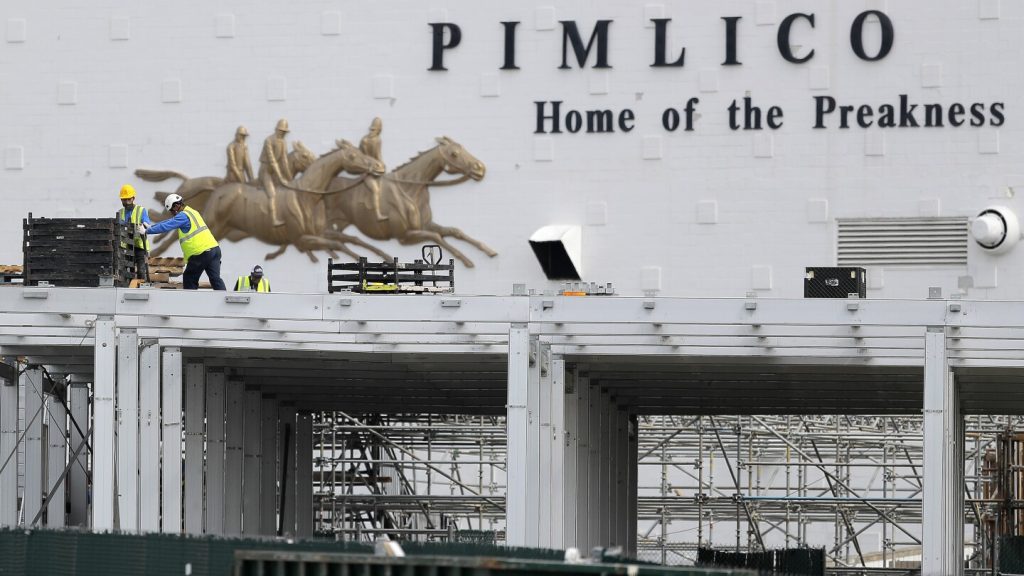The Maryland lawmakers have approved a plan to rebuild the historic Pimlico Race Course in Baltimore and transfer the track to state control. The $400 million plan will use state bonds to rebuild the home of the Preakness Stakes, the second jewel of horse racing’s Triple Crown. The legislation also calls for transferring Pimlico from the Stronach Group to a newly formed nonprofit that will operate under the state. The bill now heads to Gov. Wes Moore, who has expressed his support for it.
Under the plan, the Preakness will temporarily relocate to Laurel Park in 2026 while the new facility at Pimlico is being built, before returning to Pimlico, likely in 2027. The bill initially faced concerns from lawmakers regarding the state assuming liability for operating costs, but it was eventually amended to use horse racing purse accounts to cover any losses. Senate President Bill Ferguson highlighted that the bill caps the liability for the state and is not a blank check.
Previous plans to rebuild Pimlico in 2020 never materialized, but the new plan increases the state bonds from $375 million to $400 million. The new plan also includes a training facility, with details to be determined. The historic track, known as Old Hilltop, opened in 1870 and has hosted legendary horses like Man o’ War, Seabiscuit, and Secretariat. Despite its rich history, the aging infrastructure has been a concern, with the Maryland Jockey Club closing off grandstand seats in 2019 for safety reasons.
The horse racing industry has long been a significant part of Maryland culture, with an estimated $2 billion direct economic impact on the state. The racing industry, along with other equine industries, has been a cornerstone of Maryland agriculture and an important part of preserving green space. The new plan for Pimlico aims to revitalize the track and ensure a sustainable future for horse racing in Maryland. The Maryland Thoroughbred Racetrack Operating Authority was created last year to evaluate options for Pimlico and recommended investing in the track to play a greater role in race hosting.
The Preakness has struggled to draw large attendance numbers in recent years, with pre-pandemic numbers dwindling compared to earlier years. Plans to rejuvenate Pimlico and modernize its facilities are aimed at attracting more spectators and ensuring the continued success of the race. The temporary relocation of the Preakness to Laurel Park during the construction period is a strategic move to maintain the race’s prestige while allowing for necessary upgrades at Pimlico. The state’s commitment to investing in Pimlico underscores the importance of the horse racing industry in Maryland’s cultural and economic landscape.


